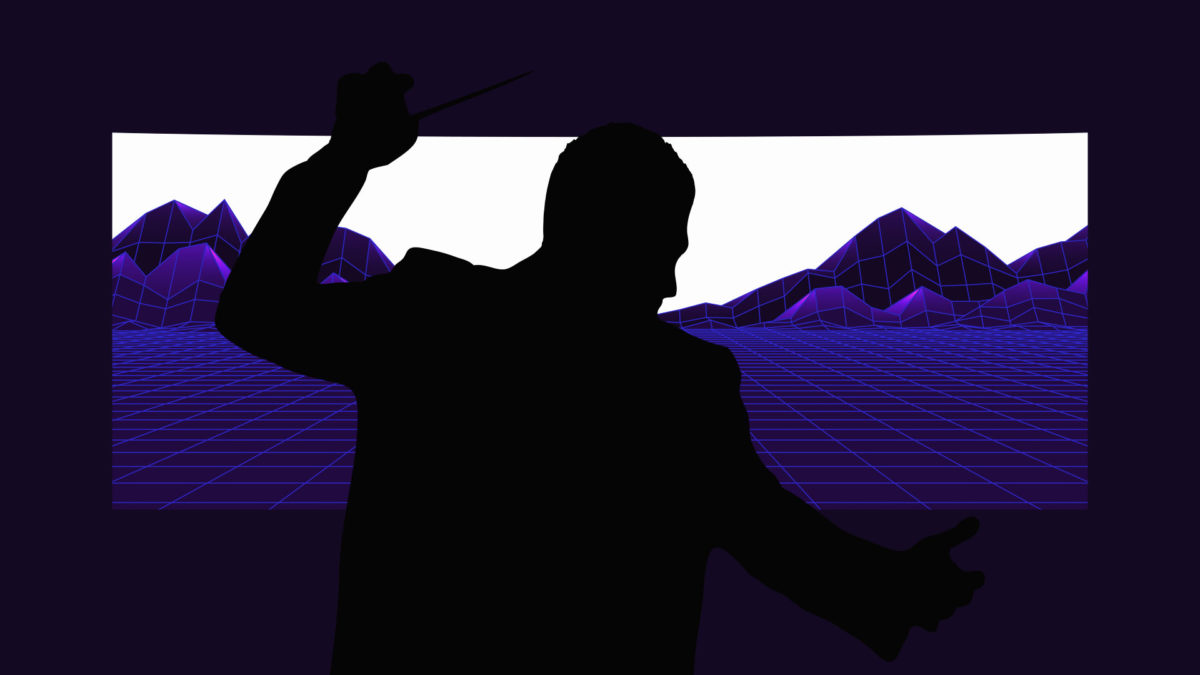So you don’t have to: Attending the Metaverse Symphony in Hong Kong

The Hong Kong Cultural Center is, for all intents and purposes, very real and very planted in the physical world. When I attended The Metaverse Symphony on May 5 – in person! – there were no virtual reality (VR) headsets for the audience to put on at the entrance, no augmented reality (AR) app for smart phones to download, and no online version of the symphony.
Perhaps you’re already familiar with one of the many versions of ‘the metaverse.’ There might not be an agreed-upon definition, but it generally suggests a virtual reality where users interact in a computer-generated world. Cryptocurrency advocates say the metaverse encompasses more, through NFTs, VR, and Minecraft-like games, while Mark Zuckerburg’s Meta (short for metaverse) focuses on creating VR workspaces and games.
The Metaverse Symphony was none of the above.
The event took place in a physical auditorium two-thirds full. The evening began with an entirely unrelated (though quite beautiful) piece about war, entitled Through the Fog. Then, conductor Gerard Solanga appeared on stage to explain what The Metaverse Symphony was and how it would work: a digital artist, Henry Chu, would sit on the sidelines and make visual effects on a large screen behind the orchestra to match with the music. How… meta?
The Metaverse Symphony was briefly and unintentionally meta
Needless to say, the first movement, entitled The Digital Age, left plenty to be desired. Think visualizations reminiscent of Starfox 64, but without the fun gameplay or dialogue. The boxes and lines moving and breaking apart didn’t seem to fundamentally relate to the supposed metaphor at hand: phones vibrating and people frantically switching apps on their phones.
Movement two was entitled Fibre Optics. Here, something truly meta did occur: a cell phone in the audience played a song on full blast and its owner didn’t know how to stop the noise for a good 45 seconds. That said, Fibre Optics had much better music than The Digital Age, providing a strong backdrop for a more relatable visual: walls of lines in black and white that continuously break apart, smashing together in a rainbow of color as the piece reached a crescendo.

Movement three of the Metaverse Symphony was named The Internet of Things, which, to be frank, is a title that only conjured memories of failed cryptocurrency IOTA (named after the smallest letter of the Greek alphabet). The movement centered around sounds outside the scope of traditional music (anyone remember Stomp!?), including car horns, newspapers ruffling, and staplers. It was at this moment I realized that I was much more enthralled by the musicians playing than the large screen filled with lines and boxes.
The final movement, The Metaverse, featured kinetic art highly reminiscent of the WinAmp or iTunes visualizers from years past: colored oils dropped in water and moved around. When I snuck a peek at the audience, I counted 15 people deeply asleep — including my fiancée.
All in all, it’s hard to go wrong with a night spent listening to a symphony orchestra performing newly crafted pieces – I’m just slightly disappointed that the ‘metaverse’ aspect didn’t live up to expectations.
Got a tip? Send us an email or ProtonMail. For more informed news, follow us on Twitter, Instagram, Bluesky, and Google News, or subscribe to our YouTube channel.
